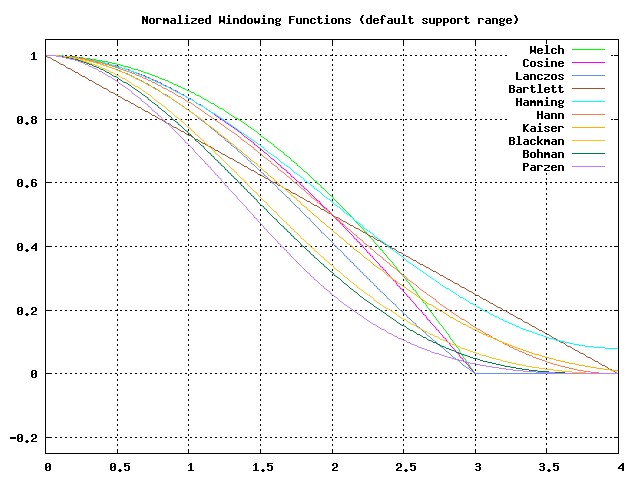anthony wrote:... all the other filters remain 4 lobed by default. That includes Raw Sinc or Fast Sinc as 4 lobes by default though they probably should also should be 3 lobe...
IMHO, Raw Sinc/Fast Sinc should be at least 4 lobes. Reason: Having a window function that does not vanish at the end of its extent (like Box=none) leaves visible artifacts. Such artifacts are decreased by using more lobes, since the filter is already small near the end of its extent, and consequently it's less important to window it to start with.
This is why Hamming and raw Sinc/SincFast should be 4 lobes at least, as well as Bartlett, because of the slope discontinuity it introduces at the center instead of at the window boundary.
There are two factors at play here:
If the window is sufficiently smooth so as not to introduce gradient discontinuities (this means that it vanishes at the end of the window, and it has a vanishing slope at the center), use more lobes if it "tapers" a lot, less otherwise.
Otherwise (if the window introduces gradient discontinuities) use more lobes.
If one only uses 3 or 4 lobes as defaults, this means that only Lanczos, Cosine and Welch are 3-lobe (if the cut-off for 3-lobe is Lanczos), and all the others should have 4 lobes.
Kaiser, depending on the parameter, either has a jump at the window edge, or it's tapered, so it should be 4-lobe either way.
Of course, the above are rules of thumb. Mix and match of lobes and windowing functions gives filters with slightly different properties. (As mentioned, Hann 2 works well when enlarging images that are "sharp".)

 (may take an hour or so to appear)
(may take an hour or so to appear)